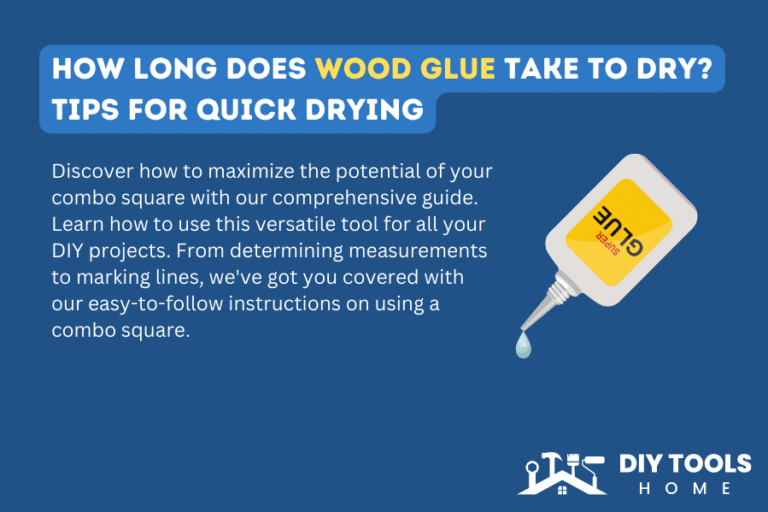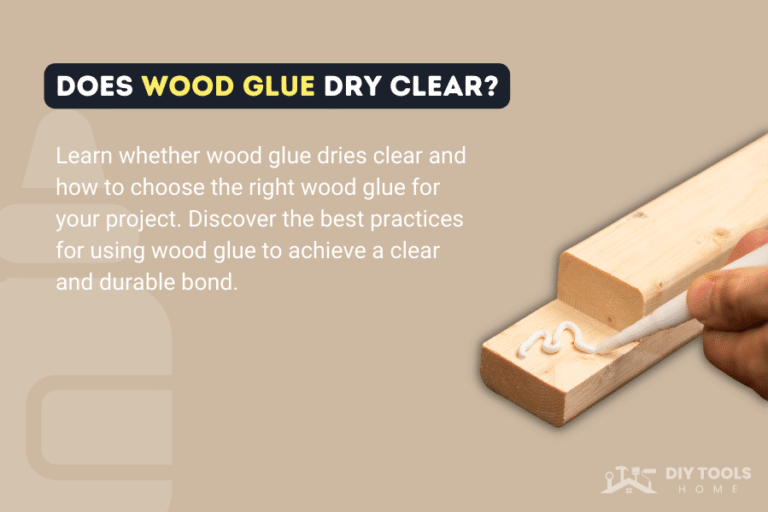Different Types of Wood Glue And Their Ideal Uses

Woodworking involves creating objects or furniture out of wood. Wood glue is an adhesive commonly used in woodworking to bond pieces of wood together. Wood glue is specifically designed for use with wood, as it creates a robust and durable bond between wood pieces.
Although there are numerous other ways to join wood pieces together, you could use nails or screws, but using glue makes the strongest bonds. The glue helps ensure the finished product will hold up well over time, even with regular use.
Many different types of glue are available, each with varying drying times. Some common types of glue used in woodworking include wood glue, epoxy, and cyanoacrylate (super glue). This article will discuss five types of wood glue and how you can choose the right wood glue for your projects.
Table of Contents
How to Use Wood Glue?
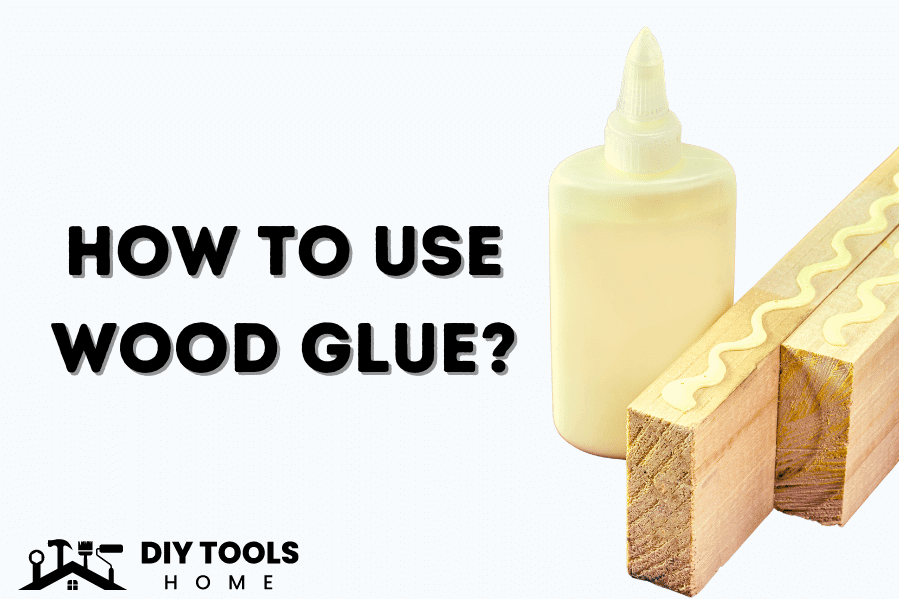
Wood glue is a versatile adhesive that is for bonding wooden surfaces. Before you know the types of wood glue, let’s understand the basic steps to use wood glue.
- Firstly, make sure the surfaces you intend to bond are clean and free of any dust. You can use sandpaper or a scraper to clean it.
- Squeeze a small amount of wood glue onto the surfaces. Use a brush, roller, or finger to spread the glue evenly over the surface.
- Carefully align the two surfaces you want to bond and press them together firmly.
- Use clamps or other tools to hold the surfaces while the glue dries.
- Use a damp cloth or sponge to remove excess glue between the surfaces.
- You can take the clamps off when the glue has dried.
Suppose you want to remove the wood glue and apply a new one. Let’s explore the other types!
5 Types of Wood Glue & Its Uses
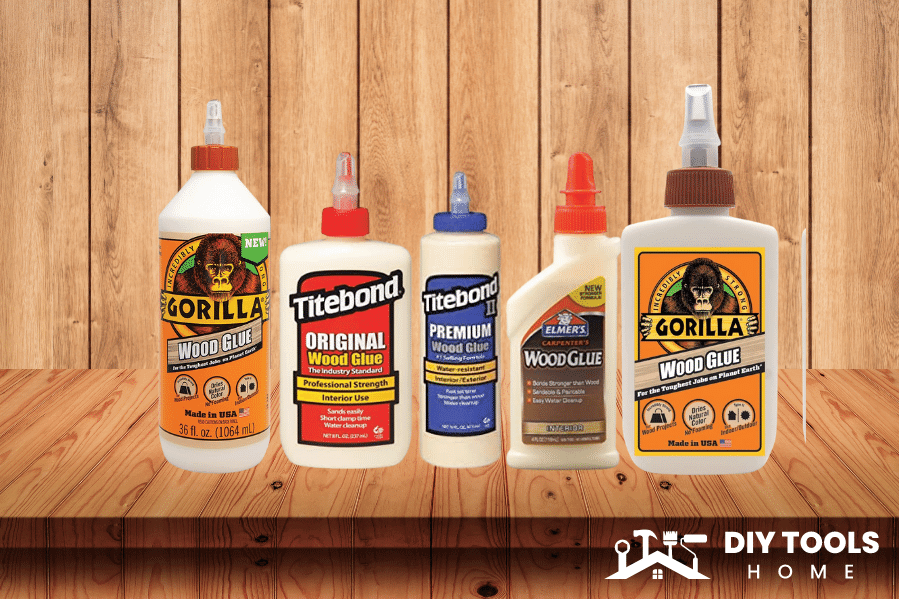
The glue can fix or repair everything in your wood or carpentry work. But first, you need to know the different adhesives available. Here are the five common types of glue.
- Polyvinyl acetate glue
- Polyurethane glue
- Cyanoacrylate glue
- Epoxy glue
- Hide glue
Now let’s discuss each glue type in detail and know their properties and how strong they are.
1. Polyvinyl acetate Glue
Polyvinyl acetate glue, commonly known as PVA, is a type of adhesive widely used in woodworking, crafting, and other applications. It is a water-based glue that dries clear and is easy to apply.
PVA glue is made by polymerizing vinyl acetate monomers with the help of a catalyst, resulting in a white, viscous liquid. PVA glue creates a strong bond between porous surfaces such as wood, paper, and fabric. It can also be used on non-porous surfaces like metal and plastic but may not provide as strong of a bond in those cases.
| Bond Strength | Setup Time | Price |
|---|---|---|
| Medium | 10-30 minutes | Low |
Properties
- Once PVA glue has dried, it typically dries clear. This process is valid when working with materials where the adhesive might be visible.
- This glue creates a strong bond when it dries, making it ideal for use in woodworking and other applications where a strong adhesive is needed.
- PVA glue is generally known to be non-toxic and safe to use.
- It typically has a low odor, which makes it more pleasant to work with than other types of adhesives.
Summary: Polyvinyl acetate glue is an excellent option because it is inexpensive, easy to clean, and has high bonding strength.
2. Polyurethane Glue
Polyurethane or PU glue is an adhesive commonly used in woodworking, construction, and other industries. This type of glue is made by combining a polyol resin with an isocyanate hardener. When these two components are mixed, they undergo a chemical reaction to make a strong, durable bond.
Polyurethane glue excels in a few scenarios where PVA glues fail to work. You can use it in areas where moisture is present, as it is resistant to water and even for marine applications. Additionally, polyurethane glue dries to a hard, rigid finish resistant to impact and vibration.
| Bond Strength | Setup Time | Price |
|---|---|---|
| Medium | 30 minutes | Medium |
Properties
- Polyurethane glue forms a strong bond between the surfaces it is applied. It can bond with various materials, including wood, metal, plastic, and ceramic.
- It is highly water-resistant. You can use it in applications where the bond may be exposed to moisture, such as outdoor construction or furniture.
- The glue has good heat resistance, making it suitable for high-temperature applications.
- Polyurethane glue expands as it cures and helps fill gaps or irregular surfaces.
Summary: Polyurethane glue is a versatile and reliable adhesive resistant to moisture where other types of glue don’t work.
3. Cyanoacrylate Glue
Cyanoacrylate glue(super glue or Krazy Glue) is a fast-acting adhesive. It is a clear, colorless liquid that dries quickly and creates a strong bond between surfaces.
Cyanoacrylate glue has a fast curing time, typically ranging from a few seconds to a few minutes. It also has a high shear strength, which means it can withstand significant stress before breaking.
| Bond Strength | Setup Time | Price |
|---|---|---|
| Low | Instant to several minutes | High |
Properties
- The glue works well for repairing the furniture, trim, and crown molding.
- Once it dries, cyanoacrylate glue creates a strong bond resistant to impact and vibration.
- It can withstand heat up to 82°C.
- The glue has a low viscosity, meaning it is thin and can flow into small cracks and crevices.
- It can become brittle over time, especially when exposed to moisture, which can cause the bond to weaken.
Summary: Cyanoacrylate glue fast-acting adhesive ideal for temporarily joining the woods.
4. Epoxy Glue
Epoxy is a type of thermosetting polymer that ranges from 5,000 PSI to 10,000 PSI. Most epoxy resins have two parts and need to be mixed to activate. It is waterproof, and its cure times do vary. Epoxies explicitly made for woodworking, such as JB Wood Weld Epoxy, are set in six minutes and cured in 1 to 3 hours. Some epoxy materials may require days to cure.
The everyday use of epoxy is to fill gaps and cracks in woodworking. It has a high shear strength and can withstand significant stress before breaking. Epoxy, however, can be dangerous if ingested or inhaled, and once it has dried, it can be challenging to remove. So, use safety gear like gloves and a well-ventilated workspace.
| Bond Strength | Setup Time | Price |
|---|---|---|
| High | A few seconds to several Hours | High |
Properties
- Epoxy has excellent adhesion properties, making it useful in various applications.
- It has high chemical resistance and can withstand exposure to acids, solvents, and other corrosive substances.
- The glue has low shrinkage during curing, which allows you to use it in applications where dimensional stability is essential.
- It is an excellent insulator that can protect electronic components from moisture and other environmental conditions.
Summary: Epoxy glue is resistant to water, chemicals, & temperature fluctuations; ideal for use in harsh environments.
5. Hide Glue
Hide glue is an adhesive made from animal collagen, typically from the hides of cows or horses. The resulting gelatin is mixed with water to create a strong and versatile glue.
It is still used today by some craftsmen and restoration specialists because of its unique properties and benefits. First, there are no VOCs. Secondly, hide glue can be easily softened and reversed with heat and moisture hide. This event is impossible with PVA, polyurethane glue, and epoxies.
| Bond Strength | Setup Time | Price |
|---|---|---|
| Medium | 20-60 minutes | Medium |
Properties
- you can easily reserve Hide glue with heat and moisture. This glue is ideal for restoration work, where you want to remove or replace the adhesive.
- It has a longer open time than other adhesives, so it stays workable and
- needs to be set more quickly.
- The glue takes longer to cure than some modern adhesives, slowing production.
- It does not contain any harmful chemicals or VOCs. So, it is an environmentally friendly option for you.
Summary: Hide glue is an adhesive ideal for restoration and traditional woodworking.
What is the Strongest Wood Glue?
Many types of wood glue are available, each with its strengths and weaknesses. However, when it comes to the strongest wood glue, Polyvinyl Acetate Glue (or PVA Glue) is known to be the strongest glue for wood. PVA is non-toxic, inexpensive, and water-resistant. Polyurethane glue is a better option if the glue will be exposed to harsh weather conditions like freeze, sunlight, and rain.
How To Choose the Right Wood Glue for your project?
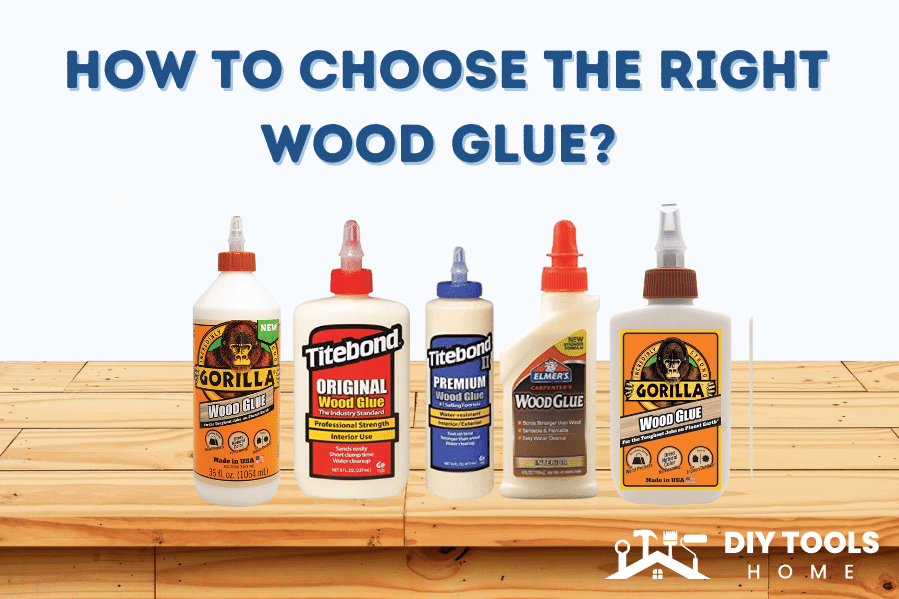
Remember, there is not one adhesive that you can use for woodworking purposes. Choosing the suitable wood glue depends on various factors, including the type of wood you are working with or the type of project you are undertaking.
Here are some factors to consider when choosing a wood glue:
1. Strength
The strength of the bond made when the glue dries up is an essential factor to consider when choosing a glue. Some adhesives made a stronger bond than others. For example, polyurethane glue is known for its exceptional strength and ability to fill gaps. Other types, like PVA glue, may need to be stronger.
2. Drying Time
Dry time means how long a wet glue takes to lose moisture and gain strength so clamps can go off. For example, some glues like CA dry nearly instantly, while others like PVA may take almost an hour to dry.
How much glue takes to dry is essential, especially if you are working on a project requiring quick assembly or working with a type of wood prone to warping or splitting.
3. Water Resistance
Choosing a water-resistant wood glue is vital if your final product is exposed to moisture or humidity. You can consider polyurethane glue and epoxy. They are both excellent options for water resistance.
4. Ease of Use
Some types of wood glue, like PVA glue, are easy to work with and clean up. So, such glue is a good choice for beginners. Other types, like epoxy, may require more skill and experience to use effectively.
5. Viscosity
Viscosity is another essential factor to consider when choosing a suitable glue. Super glue (CA glue) is ideal for minor repairs like hairline splitting and cracks in wood because it flows smoothly and dries quickly.
Although PVA is a bit fluid and light, it is significantly thicker than CA and readily absorbs into wood fibers, creating a strong chemical bond between the joint’s components.
Conclusion
Many kinds of wood glue are available; each has its unique set of pros and cons. This article may help you better understand various adhesives and how to pick the best adhesive for your upcoming project. Have you used any of these varieties of wood glue before? What were your opinions of it?
We have also covered “how to” guide on other DIY tools like tape measure and combo square etc
FAQs
How do you force wood glue into a crack?
You can apply wood glue to cracks with a small brush or a toothpick. Use a clamp or your fingers to press the gap together, forcing the glue into the crack. You may need to apply pressure for a few minutes to ensure the adhesive penetrates the entire crack. When you apply the glue, use a damp cloth to wipe away any excess glue.
Is wood glue stronger than screws?
To compare wood and screw is not an appropriate comparison. Applying wood glue can cover a lot of surface area, while screws can grip only a particular wood location.
Does wood glue work on painted wood?
In general, wood glue works best on bare wood surfaces. At the same time, wood glue can adhere to painted wood. If you are trying to glue painted wood together, creating a rough texture that will help the glue adhere is essential.
Additionally, consider using a stronger adhesive, such as epoxy, better suited to bonding painted surfaces.

